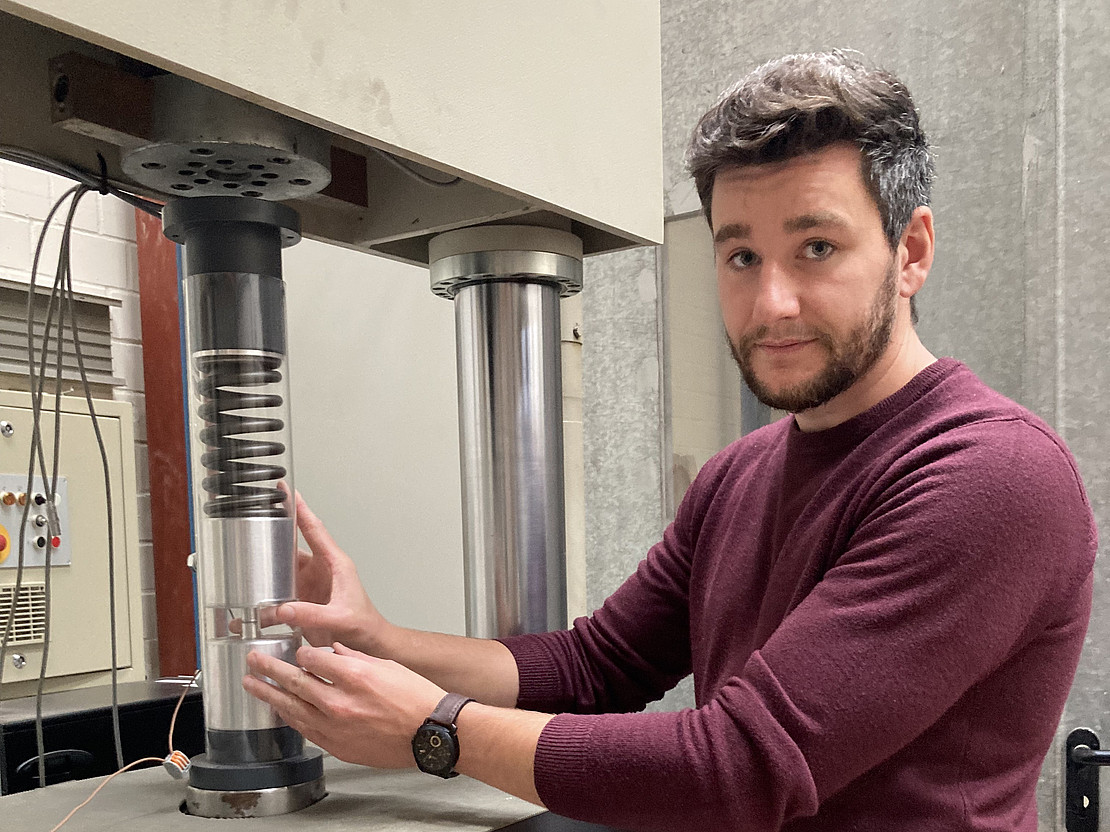This page contains automatically translated content.
What drives me - Andreas Warkentin
 Image: Sofie Althoff
Image: Sofie AlthoffAndreas Warkentin (27): Harvesting energy from the vibration of objects
"In my research, I deal with the theoretical description of smart materials and their application in the context of energy harvesting. The question is whether the mechanical movement of objects that we find in our environment can be converted into electricity. Aircraft wings or bridges, for example, are constantly vibrating - if the existing energy could be used, it would be a sustainable source of energy. A simple example of the utilization of the conversion of mechanical energy into electrical energy: some lighters contain so-called piezoelectrics. They use a mechanical load to generate an electrical spark, which then ignites the gas. The materials whose microphysical modeling and numerical simulation I am working on, so-called ferroelectrics, can do even more. They permanently change their microstructure when exposed to external loads. This generates heat. However, these changes are also complicated to predict. Ferroelectric material could now be applied to vibrating objects such as bridges, for example as a film. In principle, this would result in the production of heat. However, in order to be considered for energy harvesting, the mechanical loads must be able to perform large amounts of work without being impaired in their actual function by the smart material. The material itself cannot store the converted energy, which is why the resulting electrical voltage must be tapped, e.g. by connecting an electrical circuit. It is also possible to store the harvested energy in batteries afterwards. My focus is on microphysical modeling, so I do basic research. I am also considering theoretical concepts for energy harvesting cycle processes. Experts from design and production are then responsible for the practical implementation and further development of the circular processes for energy harvesting. I am particularly pleased that experiments in collaboration with the University of Oxford have confirmed our theoretical considerations and provided insights into how we can further advance the modeling.